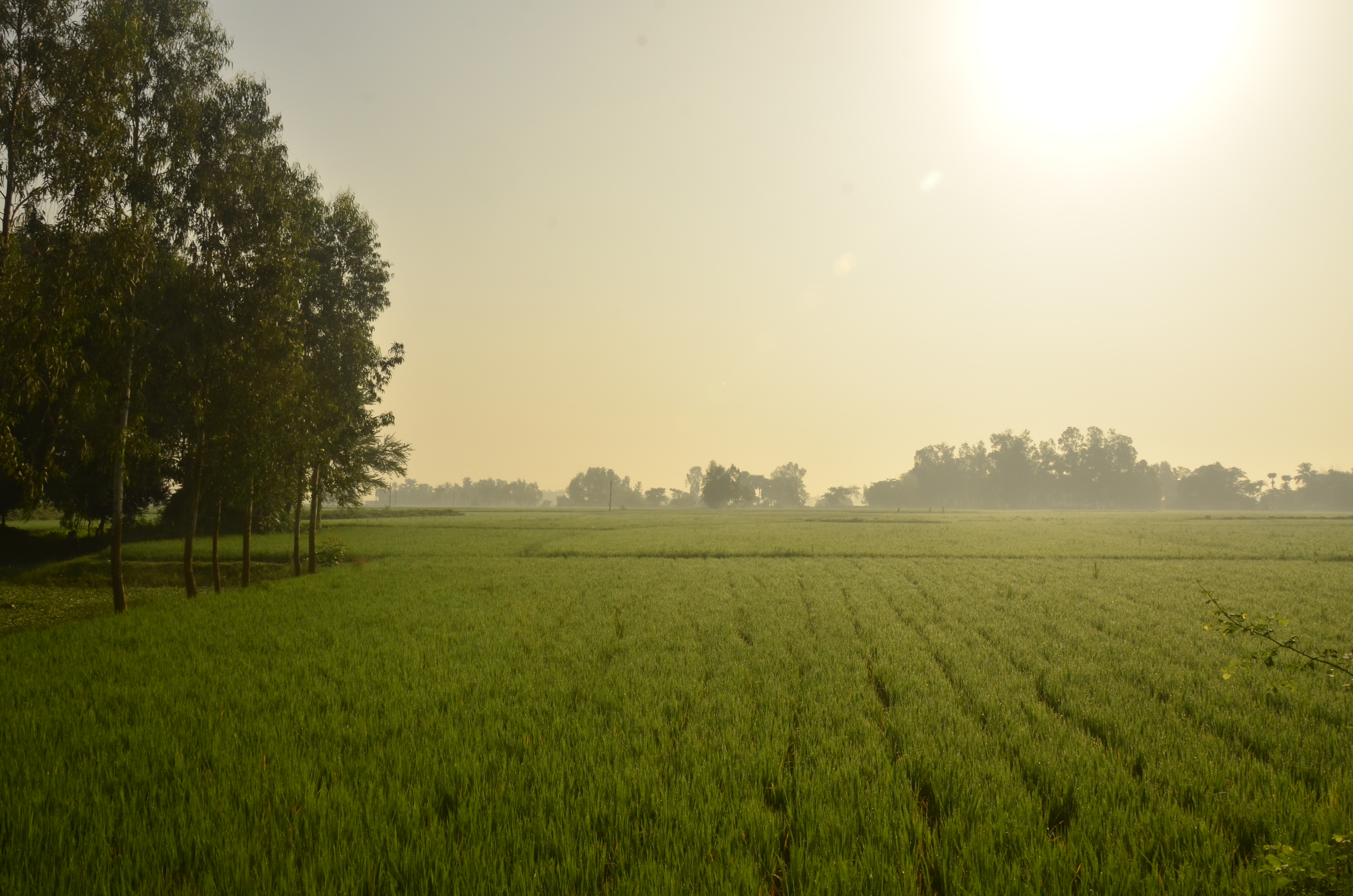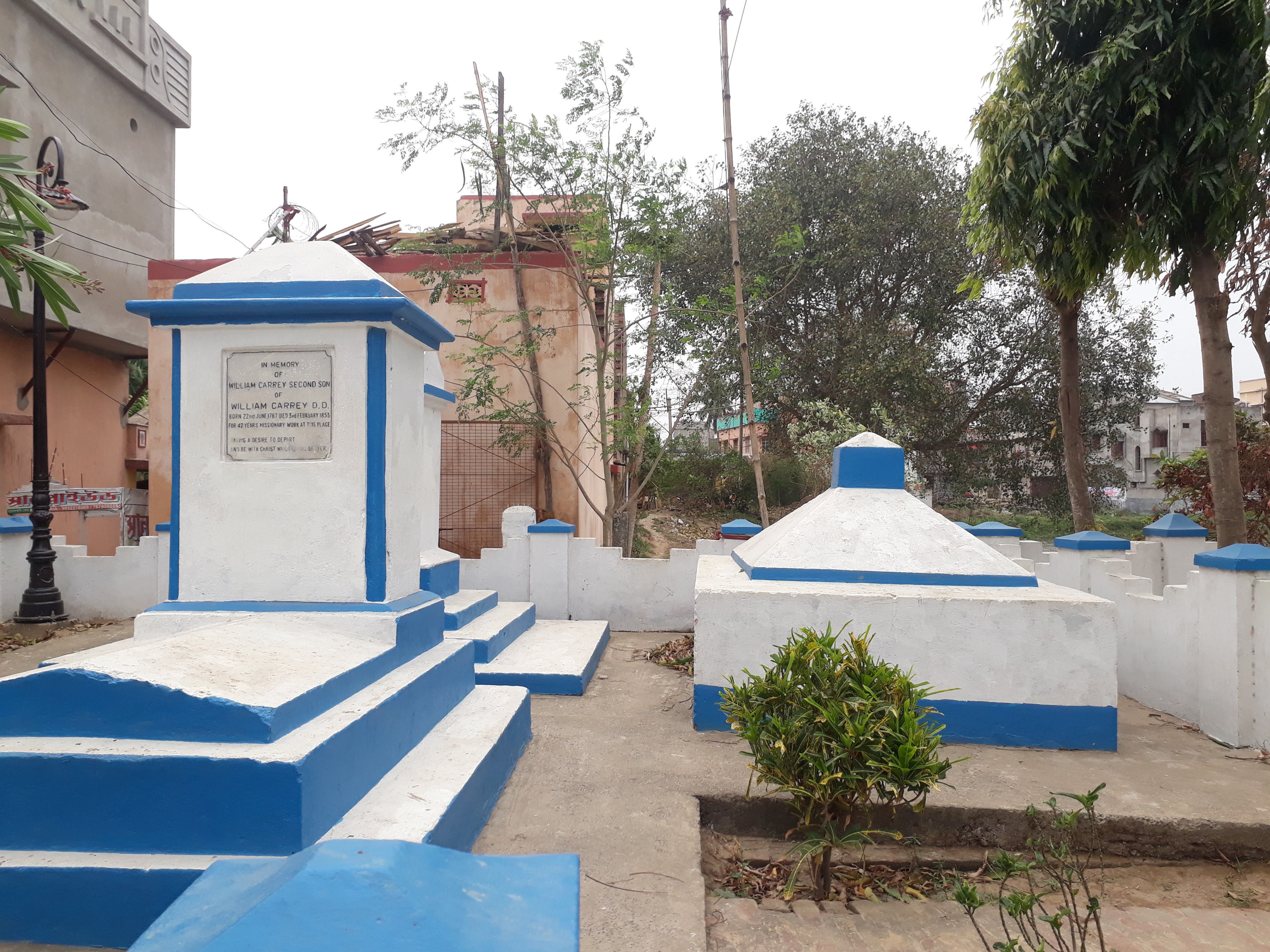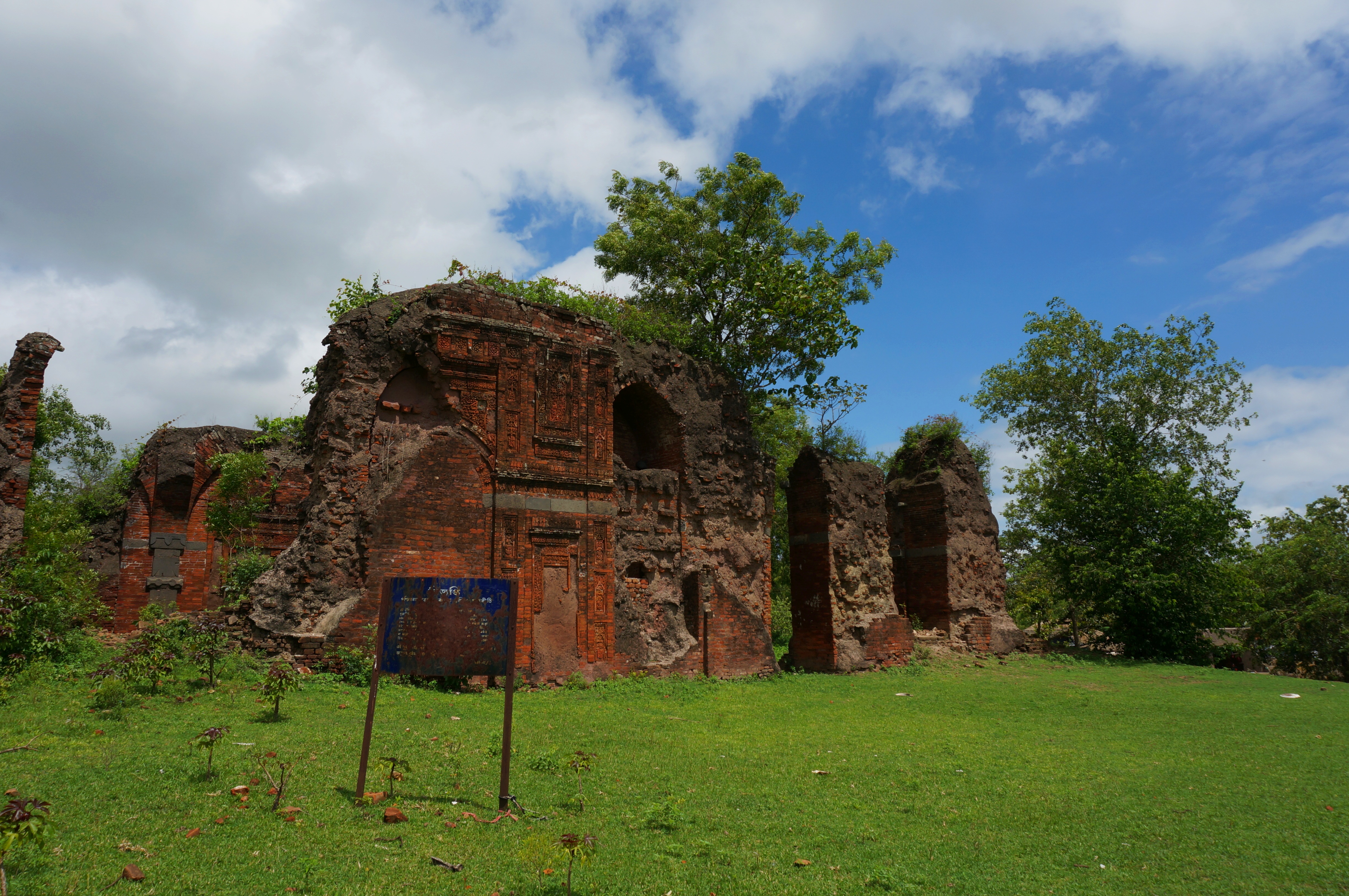|
Kogram
Kogram is a village in Ketugram I CD block in Katwa subdivision of Purba Bardhaman district in West Bengal, India. History According to Binoy Ghosh, Kogram is located at the confluence of the Ajay and the Kunur. The Ajay has been eating up parts of Kogram and pushing it back. In olden days Ujani or Ujaninagar (not to be confused with Ujjaini) covered a much bigger area, covering present day Kogram, Mongalkote and surrounding areas. Kabikankan Mukundaram (16th century poet), in his Chandimangal, as well as other poets of the era, have spoken of the fortified Ujani, its king Vikramkesari and its merchants. Ujani was the home of Dhanapati Sadagar. It was also the paternal home of Behula of Manasamangal fame. In the olden days, many merchants lived in the riverine territory now a part of Purba Bardhaman and Hooghly districts, with easy access to the port-town of Saptagram. Around 700 merchants are said to have come to Ujani to attend the last rites Dhanapati Sadagar’s fathe ... [...More Info...] [...Related Items...] OR: [Wikipedia] [Google] [Baidu] |
Mongalkote
Mongalkote is a village in Mongalkote CD block in Katwa subdivision of Purba Bardhaman district in the state of West Bengal, India. History Mongalkote is an ancient place. In the Jataka tale (around 4th century BC) '' Vessantara'', the capital of Shivirattha kingdom was mentioned as a place called Jatuttara. In his publication ''Sibi Kings Vessantara, His Country and Cultural Heritage'', Aswini Kumar Choudhury has mentioned Jetuttara as being located at or near the present day Mangalkota, which was a flourishing place from the Gupta period to the Sena dynasty, but it rose to its greatest heights during Muslim rule. There are graves of five pirs, including Gholam Panjatan. Mosques were built by Danesh Mand and Hussain Shah. During the long Hindu and Buddhist periods, Mongalkote was obviously an important centre of activity. It is even thought that it had links with adjoining Gopbhum. However, not much is known about the period.Ghosh, Binoy, ''Paschim Banger Sanskriti'', , part ... [...More Info...] [...Related Items...] OR: [Wikipedia] [Google] [Baidu] |
Gangatikuri
Gangatikuri is a village in Ketugram II CD block in Katwa subdivision of Purba Bardhaman district in the state of West Bengal, India. Geography CD block HQ The headquarters of Ketugram II CD block are located at Gangatikuri. Urbanisation 88.44% of the population of Katwa subdivision live in the rural areas. Only 11.56% of the population live in the urban areas. The map alongside presents some of the notable locations in the subdivision. All places marked in the map are linked in the larger full screen map. Demographics As per the 2011 Census of India The 2011 Census of India or the 15th Indian Census was conducted in two phases, house listing and population enumeration. The House listing phase began on 1 April 2010 and involved the collection of information about all buildings. Information ... Gangatikuri had a total population of 4,053, of which 2,064 (51%) were males and 1,989 (49%) were females. Population below 6 years was 476. The total number of literates in Ganga ... [...More Info...] [...Related Items...] OR: [Wikipedia] [Google] [Baidu] |
Dainhat
Dainhat is a town and a Municipality under Katwa police station of Katwa subdivision, in Purba Bardhaman district in the state of West Bengal, India. History A Maratha cavalry or Bargis under Bhaskar Pandit sent to Bengal by Raghoji I Bhonsle in the 18th century entered through Panchet and started looting the countryside. Bhaskar Pandit had decided to build Dainhat as his main camp to attack enemies. He had dug several trenches to protect his camp. A temple created by Bhaskar Pandit still exits near the place Swamaj Bati of Dainhat. Currently that temple is known as Kisore Kisori Mandir. Geography Location Dainhat is located at . CD block HQ The headquarters of Katwa II CD block are located at Dainhat. Urbanisation 88.44% of the population of Katwa subdivision live in the rural areas. Only 11.56% of the population live in the urban areas. The map alongside presents some of the notable locations in the subdivision. All places marked in the map are linked in the larger full s ... [...More Info...] [...Related Items...] OR: [Wikipedia] [Google] [Baidu] |
Katwa
Katwa is a sub-divisional town and railway junction in Purba Bardhaman district of the Indian state of West Bengal. It is the headquarters of the Katwa subdivision. The town was built at the confluence of Ganga and Ajay. Katwa is a border city of three districts; Purba Bardhaman District, Nadia District and Murshidabad District. Geography Location Katwa is located at . It has an average elevation of . It is situated between the Ajay River and the Hooghly River and so is bounded by water to the east, west, and north. Police station Katwa police station has jurisdiction over Katwa and Dainhat municipalities, and Katwa I and Katwa II CD Blocks. The area covered is 351.03 km2. Urbanisation 88.44% of the population of the Katwa subdivision live in rural areas. Only 11.56% of the population live in the urban areas. The map alongside presents some of the notable locations in the subdivision. All places marked on the map are linked in the larger full-screen map. History Ka ... [...More Info...] [...Related Items...] OR: [Wikipedia] [Google] [Baidu] |
Katwa Subdivision
Katwa subdivision is an administrative subdivision of the Purba Bardhaman district in the state of West Bengal, India. Overview The Katwa subdivision extends from the Kanksa-Ketugram plain to the Bhagirathi basin. The Ajay River, Ajay flows through the subdivision and joins the Hooghly River, Bhagirathi. Subdivisions Purba Bardhaman district is divided into the following administrative subdivisions: Administrative units Katwa subdivision has 3 police stations, 5 community development blocks, 5 panchayat samitis, 46 gram panchayats, 388 mouzas, 373 inhabited villages, 2 municipalities and 1 census town. The municipalities are at Katwa and Dainhat. The census town is: Panuhat. The subdivision has its headquarters at Katwa. Demographics As per the 2011 Census of India data Katwa subdivision, after bifurcation of Bardhaman district in 2017, had a total population of 963,022. There were 494,584 (51%) males and 468,538 (49%) females. Population below 6 years was 109,884. As p ... [...More Info...] [...Related Items...] OR: [Wikipedia] [Google] [Baidu] |
Panuhat
Panuhat is a census town in Katwa I CD Block of Katwa subdivision in Purba Bardhaman district in the Indian state of West Bengal. Geography Location Panuhat is located at . Urbanisation 88.44% of the population of Katwa subdivision live in the rural areas. Only 11.56% of the population live in the urban areas. The map alongside presents some of the notable locations in the subdivision. All places marked in the map are linked in the larger full screen map. Demographics As per the 2011 Census of India, Panuhat had a total population of 6,473 of which 3,354 (52%) were males and 3,119 (48%) were females. Population below 6 years was 650. The total number of literates in Panuhat was 4,817 (82.72% of the population over 6 years). India census A census is the procedure of systematically acquiring, recording and calculating information about the members of a given population. This term is used mostly in connection with national population and housing censuses; other common cens ... [...More Info...] [...Related Items...] OR: [Wikipedia] [Google] [Baidu] |
Ketugram
Ketugram is a village in Ketugram II Community development block in India, CD block in Katwa subdivision of Purba Bardhaman district in the state of West Bengal, India. Etymology It is said that Ketugram was named after Chandraketu, son of king Bhopal. The earlier name of Ketugram was Bahula.Ghosh, Binoy, ''Paschim Banger Sanskriti'', , part I, 1976 edition, pages 188-189, Prakash Bhaban History According to Binoy Ghosh, it is claimed by some that Ketugram was the birthplace of 14th century lyric poet Chandidas of ''Vaishnava Padavali'' fame. It is said that the people of Ketugram were furious with Chandidas for marrying a low-caste widow. He went away to Nanoor in the adjoining district of Birbhum, along with the idol of Bisalakshi that he used to worship. Later, when hostilities subsided, Chandidas was even accepted back in Ketugram as the priest of Bahulakshi temple. The place in the northern part of Ketugram, which is believed to be the birth-place of Chandidas, is even toda ... [...More Info...] [...Related Items...] OR: [Wikipedia] [Google] [Baidu] |
Nutanhat
Nutanhat is a village in Mongalkote (community development block), Mongalkote Community development block in India, CD block in Katwa subdivision of Purba Bardhaman district in the state of West Bengal, India. Geography Physical features The Kunur River, Kunur, one of the main tributaries of the Ajay River, Ajay, joins the Ajay near Nutanhat. CD block HQ The headquarters of Mongalkote CD block are located at Nutanhat. Urbanisation 88.44% of the population of Katwa subdivision live in the rural areas. Only 11.56% of the population live in the urban areas. The map alongside presents some of the notable locations in the subdivision. All places marked in the map are linked in the larger full screen map. Demographics As per the 2011 Census of India Nutanhat had a total population of 5,349, of which 2,738 (51%) were males and 2,611 (49%) were females. Population below 6 years was 587. The total number of literates in Nutanhat was 3,328 (69.89% of the population over 6 years). Tran ... [...More Info...] [...Related Items...] OR: [Wikipedia] [Google] [Baidu] |
Kandra, Bardhaman
Kandra is a village in Ketugram I CD block in Katwa subdivision of Purba Bardhaman district in the state of West Bengal, India. Geography CD block HQ The headquarters of Ketugram I CD block are located at Kandra. Urbanisation 88.44% of the population of Katwa subdivision live in the rural areas. Only 11.56% of the population live in the urban areas. The map alongside presents some of the notable locations in the subdivision. All places marked in the map are linked in the larger full screen map. Demographics As per the 2011 Census of India Kandara had a total population of 11,534, of which 5,894 (51%) were males and 5,640 (49%) were females. Population below 6 years was 1,311. The total number of literates in Kandara was 7,238 (70.80% of the population over 6 years). Transport The State Highway 6, running from Rajnagar (in Birbhum district) to Alampur in (Howrah district), passes through Kandra. Jnandas Kandra railway station is a station on the narrow gauge Ahmedpur Kat ... [...More Info...] [...Related Items...] OR: [Wikipedia] [Google] [Baidu] |
Ketugram I
Ketugram I is a Community development block in India, community development block that forms an administrative division in Katwa subdivision of Purba Bardhaman district in the Indian States and territories of India, state of West Bengal. Geography Location Rajoor, a constituent gram panchayat of Ketugram I block, is located at . Ketugram I CD Block is part of the Kanksa Ketugram plain, which lies along the Ajay River, Ajay. The river forms the southern boundary of the CD Block. The soil is Alluvium, alluvial of recent origin. Ketugram I CD Block is bounded by Bharatpur I CD Block, in Murshidabad district, on the north, Bharatpur II CD Block, in Murshidabad district, and Ketugram II CD Block on the east, Mongalkote (community development block), Mangolkote CD Block on the south and Nanoor (community development block), Nanoor and Labpur (community development block), Labpur CD Blocks, in Birbhum district, on the west. Ketugram I CD Block has an area of 193.98 km2. It has 1 ... [...More Info...] [...Related Items...] OR: [Wikipedia] [Google] [Baidu] |
Behula
Behula is the protagonist in the Shiva Purana and the Manasamangal genre of Assamese and Bengali medieval epics. A number of works belonging to this genre were written between the thirteenth and eighteenth centuries. Though the religious purpose of these works is to eulogise the Hindu goddess Manasa, these works are more well known for depicting the love story of Behula and her husband Lakhindar (or Lakshindar or Lakshmindara). Story from Shiva puran Usha, the daughter of Banasura, fell in love with Aniruddha the son of Pradyumna. Aniruddha was a grandson of lord Krishna. After their marriage they were reborn again as Behula and Lakshindar in next life and married each other again. Behula was the daughter-in law of Chand Sadagar of Champaknagar. According to myth, two beautiful ''apsara's'' of the kingdom of heaven, Usha and Aniruddha were cursed by Gods as per the plan of Goddess Manasa and sent to earth as Behula and Lakshinder - Behula as the only daughter of Say bene (or S ... [...More Info...] [...Related Items...] OR: [Wikipedia] [Google] [Baidu] |
Chand Sadagar
Chand Sadagar ( Assamese: চান্দ সদাগৰ, Bengali: চাঁদ সদাগর) was a rich and powerful sea merchant of Champaknagar in Eastern India. This merchant has been claimed by both the Assamese and Bengali people of India to be associated with their respective states and communities. Medieval Bengali poet Bipradas Pipilai mentioned in his ''"Manasamangal Kāvya"'' (or "Manasa Vijay") that merchant ship of Chand Sadagar used to proceed to the sea from ancient Champaknagar of Kamarupa after passing through Tribeni, situated at the junction of Saptagram and the confluence of Ganges, Saraswati and Jamuna River of modern-day West Bengal. Narayan Dev in the Assamese scriptures gave an account in his ''Manasamangal'' about the merchant ship of the trader Chand Saudagar proceeding to the sea from ancient Champaknagar of Assam passing through Saptagram and Tribeni, the tri-junction of the Ganges, Saraswati and Jamuna River. In the ''Padmapuran'' (Hindu Sptur ... [...More Info...] [...Related Items...] OR: [Wikipedia] [Google] [Baidu] |
.jpg)





